A while back I wrote about my travels through Japan. If you are planning to travel, or just dreaming on the internet, you can read about Tokyo and our travels through the mountains, and our Postcards from Interior Japan to see Japan’s beautiful inland mountainous region, and about the ancient city of Kyoto in our Postcards from Japan – Kyoto.
The focus of our trip in Kyoto was traditional handicrafts. Having been introduced to design lessons from my grandmother in my childhood, I was eager to learn about the many ancient traditions. Each village we visited in Japan specialized in one art or handicraft form or another.
The wide variety of traditional handicrafts of Japan enjoyed official recognition and protection and, are very much in demand. Each craft demands a set of specialized skills passed on from generation to generation with carefully guarded techniques and designs. Textile crafts, included silk, hemp, and cotton, woven (both spinning and dyeing) vary in forms ranging from timeless folk designs to complex court patterns. Famillies who carry on the tradition of silk-weaving can be traced to the fifteenth century in the famous Nishijin weaving center of Kyoto, where fabrics worn by the emperor and the aristocracy were produced.
The fun for us however was in visiting the various sites and watching the process and sometimes participating in workshops.
The Nishijin Textile Center is a terrific place to enjoy the beauty of kimonos and witness the delicate process of Japanese textile weaving. Located in the Nishijin area of Kyoto, the textile museum is also a terrific place to catch a stage presentation where they showcase the beautiful kimonos in a fashion show. We were lucky to catch a fashion show while we were there.
Below is a weaver, and some of the tools, and trims to embellish the kimonos with – all meticulously hand-made.

Here is a close-up of the needlework, to show the incredible detail, again all done by hand.

The fashion show was spectacular!

I had fun trying on yukatas, an informal style of kimono at a shop later. I think the shopkeeper’s obi tying skills need work;), but the sand dollar motif is an example of a pattern that can be produced by traditional handicraft of Japan – shibori dying.

Our next workshop was on kimono printing. The master kimono painter below demonstrated his artistry on silk stretched along a conveyor belt-like loop. The delicate silk was held taut with the aid of a piece of bamboo underneath with needle-like projections that stretched it to create a workable surface for him to apply the painted pattern on.

Applying the dye.

A close-up of the section he was working on, and below, the details, completed.


…and here you see the placement on the lower part of the kimono.

Now it was our turn. First he demonstrated the silk screening technique for us to follow step by step.

One colour is applied at a time. It is very delicate silk and the dye is inked on with a stencilling brush so it dries very quickly and we can move onto the next colour.
The final step was to add the white outline to punctuate the figures.

I asked the instructor if he would help me sign my name in Japanese. I still had a postcard (of Anna Mae Wong with Chingwah Lee at his studio) where my grandmother showed me how to write my name but our instructor used a different set of characters (or Kanji).
Helping me with my ‘signature’.

My finished piece, a handkerchief – a beginner lesson in kimono dying!

Here are a few more of his exquisite designs.

Here, a dressy kimono for more formal occasions.

A few more photos of their beautiful work to wrap up.



If I could have stayed here and ‘painted’ kimonos I think I would have jumped on that as a career change. The work was far more beautiful than can be captured in photos on an i-phone.
The Kyoto Handicraft Centre showcases many of the area’s finest from lacquerware to woodblock prints to Yukata (casual kimonos, often made from lightweight cotton).Below is the yukata both my sister and I purchased. This type of pattern can be created using this technique although at the price we paid I have a hunch ours were manufactured, not hand painted;). Still, I love it.
If you travel to Japan, I’m sure you will find all kinds of wonders to discover.
For a look at kimonos, and the influence the kimono has had on modern fashion, here are a couple of fabulous exhibits you might want to visit or read about:


Travel Notes:
We stayed at:
- Kyoto Tokyo Hotel, Kyoto
- Court Hotel Shijo (this was the most modest of all of our hotels but we transferred to it after the first two days because it was located centrally just off the main street and main subway intersection so it proved quite adequate)
- To see/do
- Tour Nijo-jo Castle
- See a kimono fashion show at the Nishijin Textile Center
- See the Golden Pavilion
- Visit the Shibori Museum and try your hand at this ancient technique
- visit the Gion (Geysha) district If you want to deepen the experience, try a Maikoya and experience a tea ceremony
- visit the thousands of vermillion gates at Fushimi Inari Shrine
- fashion shopping: Fujii Daimaru (Beams is a popular Japanese brand and there are other lovely shops there too. Don’t overlook the food level)
































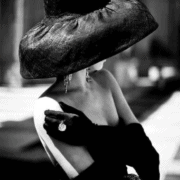



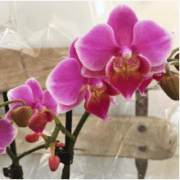
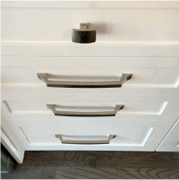

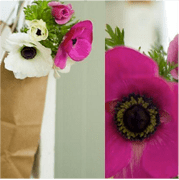
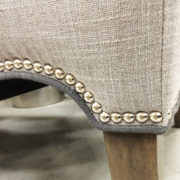
What an interesting read! Sounds like an incredible trip.
Thank you Sylvia, I knew you would appreciate it.
Such GORGEOUS textiles, Judith! What a wonderful trip!
What a wonderful trip- I would love to visit Japan one day!! Thanks for sharing!
Judith: I just loved this post, as I do all of your Japanese travel posts. Thank you for taking us along and helping us to all see the work of these artisans work – up close and personal.
My time may have passed to visit these places, but if I am blessed with one more chance to travel, I believe it would be to Kyoto.
Thanks so much.
What beauty and inspiration. Thanks for taking me on a little armchair trip. I appreciated it!
Thank you for sharing this stunning art and craftsmanship. I can only imagine how gorgeous everything was in person!
What absolutely brilliant colors, textures, & patterns in the images in your post Judith. Those ottomans were scrumptous and of course would create drama in any space, How fortunate for you to have this travel experience.
Yes, I should go back and import those ottomans … or is it ottomen? WHat exactly is the plural here? Nonetheless, it was so incredible.
Hi Sheri,
Yes, it was truly incredible. You cannot capture the incredible sensory beauty but what a culture to celebrate beauty and artistry everywhere. So different than here.
Haha, thank-you for your comments. I wish it could be a real trip…but at least you were spared the loooong flight. Still, the beauty is incredible!
Yes, Leslie, good choice, Kyoto is spectacular but I would also highly recommend an inland trip to experience the Japanese villages to get a real sense of Japanese life. There will be time for travel to come. This trip is so impossible to describe. A very long flight but such an incredible life changing experience.
If only I could have tea with my grandmother and discuss…(hehe she was a coffee drinker but still!)
Oh don’t hesitate. It is magical!
Thank you. It was wonderful. If only we could travel right now!
Oh, that looks amazing! What is the name of the Kimono painting studio you visited? I would love to experience it for myself.